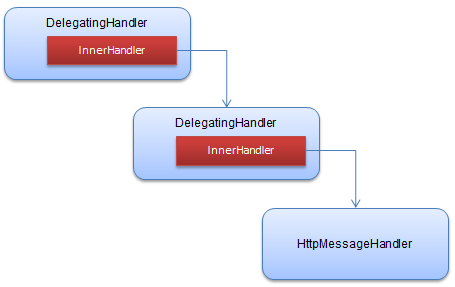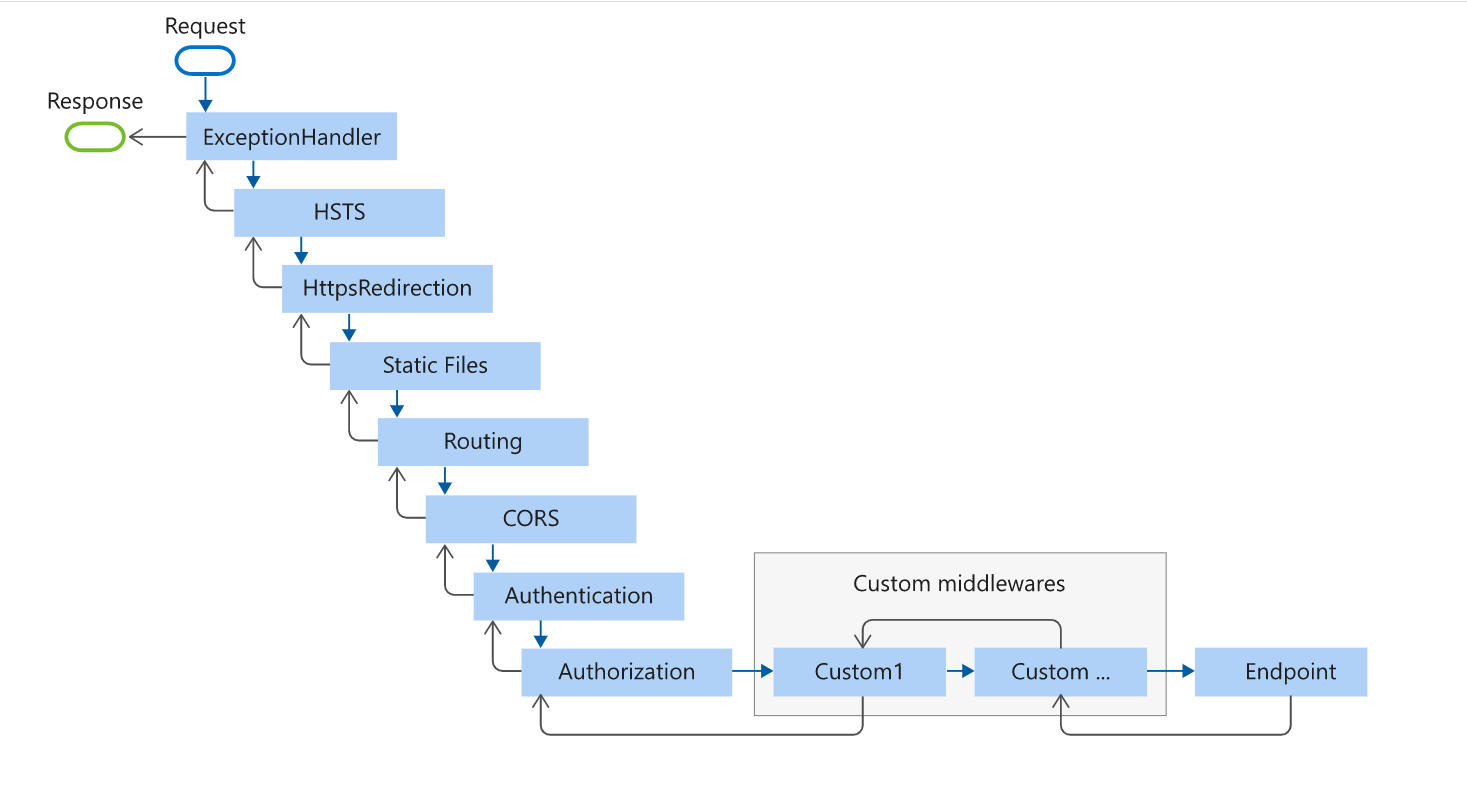什么是DelegateHandler
ASP.NET Web API的核心框架是一个消息处理管道,这个管道是一组HttpMessageHandler的有序组合。这是一个双工管道,请求消息从一端流入并依次经过所有HttpMessageHandler的处理。在另一端,目标HttpController被激活,Action方法被执行,响应消息随之被生成。响应消息逆向流入此管道,同样会经过逐个HttpMessageHandler的处理。
HttpMessageHandler
ASP.NET Web API的消息处理管道由一组HttpMessageHandler经过“首尾相连”而成,ASP.NET Web API之所以具有较高的可扩展性,主要源于采用的管道式设计。虽然ASP.NET Web API框架旨在实现针对请求的处理和响应的回复,但是采用的处理策略因具体的场景而不同。
DelegateHandler
我们说ASP.NET Web API消息处理管道是通过一组有序的HttpMessagHandler“首尾相连”而成,具体实现“管道串联”是通过DelegatingHandler这个类型来完成的。顾名思义,DelegatingHandler具有委托功能,当它自己负责的消息处理任务完成之后可以委托另一个HttpMessagHandler进行后续的处理。如果这个被委托的也是一个DelegatingHandler对象,不就可以组成一个委托链了吗?而这个委托链不就是由一个个DelegatingHandler组成的消息处理管道吗?
如下面的代码片断所示,DelegatingHandler是一个继承自HttpMessageHandler类的抽象类。
1
2
3
4
5
public abstract class DelegatingHandler : HttpMessageHandler
{
protected internal override Task<HttpResponseMessage> SendAsync(HttpRequestMessage request, CancellationToken cancellationToken);
public HttpMessageHandler InnerHandler get; set; }
}
如果ASP.NET Web API的消息处理管道均由DelegatingHandler组成(位于管道尾端的HttpMessageHandler除外),我们就可以根据其InnerHandler获得对被委托的HttpMessageHandler对象的引用,由此便构成具有如下图所示的链式结构。组成ASP.NET Web API核心框架的消息处理管道就这么简单。

.net core
在.net core中可以使用中间件来实现类似的功能。
Middleware is software that’s assembled into an app pipeline to handle requests and responses. Each component:
- Chooses whether to pass the request to the next component in the pipeline.
- Can perform work before and after the next component in the pipeline.
这篇微软的文章介绍了如何将handler转为.net core 中间件

Reference
ASP.NET Web API标准的“管道式”设计
Implement DelegatingHandler in ASP.NET Core 5.0 Web API?
Registering a new DelegatingHandler in ASP.NET Core Web API
ASP.NET Core Middleware
Migrate HTTP handlers and modules to ASP.NET Core middleware